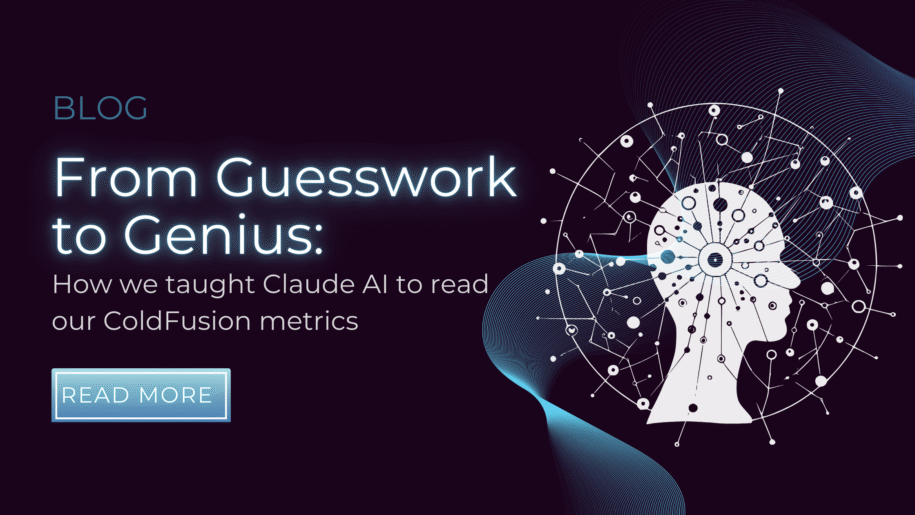Last month, our ColdFusion app started acting up again.
Memory usage was spiking, error logs were piling up, and every time we thought we’d found the root cause, something else broke.
We were doing what every developer has done at some point — staring at dashboards, combing through logs, and muttering “it worked yesterday…”.
Then we tried something new: hooking FusionReactor up to Claude AI using MCP.
What happened next felt like going from flying blind to having an expert co-pilot whispering real-time advice.
The idea
FusionReactor already gave us amazing visibility into JVM performance, error logs, and transactions.
But we wanted to take it a step further — what if an AI could read those metrics in real-time and tell us exactly what to fix?
That’s where MCP (Model Context Protocol) came in.
It acts as the middleman between FusionReactor Cloud and Claude AI, streaming live performance data directly into the AI’s brain.
Getting set up
We thought it would be complicated — it wasn’t. Here’s how we did it.
Step 1 — Spin up the MCP Server
The MCP server is the bridge. We ran it using Docker:
docker run --rm -d -p 8000:8000 \
-e GRAFANA_URL=https://api.fusionreactor.io/g \
-e GRAFANA_API_KEY=<YOUR_API_KEY> \
mcp/grafana
That was it. The server started listening on port 8000, ready to feed Claude our data.
Step 2 — Teach Claude where to listen
In Claude Desktop, we went into:
Settings → Developer → Edit Config
And added:
{
"mcpServers": {
"grafana": {
"command": "npx",
"args": [
"mcp-remote",
"http://localhost:8000/sse"
]
}
}
}
Now Claude knew exactly where to grab the metrics.
Step 3 — Let the magic happen
We restarted Claude Desktop… and the moment it connected, things changed.
NOTE: MCP requires the ‘npx’ program to be installed on the same machine as Claude Desktop, which is part of the nodejs package.
What It Can Do
The first time we tried it, we simply asked:
“Why has memory usage been climbing all day?”
Claude pulled the heap usage graphs from FusionReactor, noticed a pattern, and suggested a garbage collection tuning tweak.
It didn’t just show the data — it explained it.
We’ve since used it to:
- Summarize error logs and highlight recurring issues
- Suggest JVM configuration changes
- Pinpoint slow transactions and possible root causes
- Give us proactive warnings before users noticed a problem
Example in action
One afternoon, CPU usage spiked unexpectedly.
We asked:
“What’s causing the CPU spike right now?”
Claude responded with a breakdown of the top offending threads, linked it to a specific ColdFusion scheduled task, and even suggested a way to stagger the workload.
The fix took 10 minutes — without AI, we’d have been chasing it for hours.
Why we’re not going back
With MCP + FusionReactor + Claude, troubleshooting has shifted from reactive to proactive.
We no longer live in the graphs — we live in the solutions.
If you’re curious about setting this up yourself, the official docs are here: FusionReactor MCP Docs
And if your ColdFusion app has ever kept you up at night… this might just let you sleep again.











